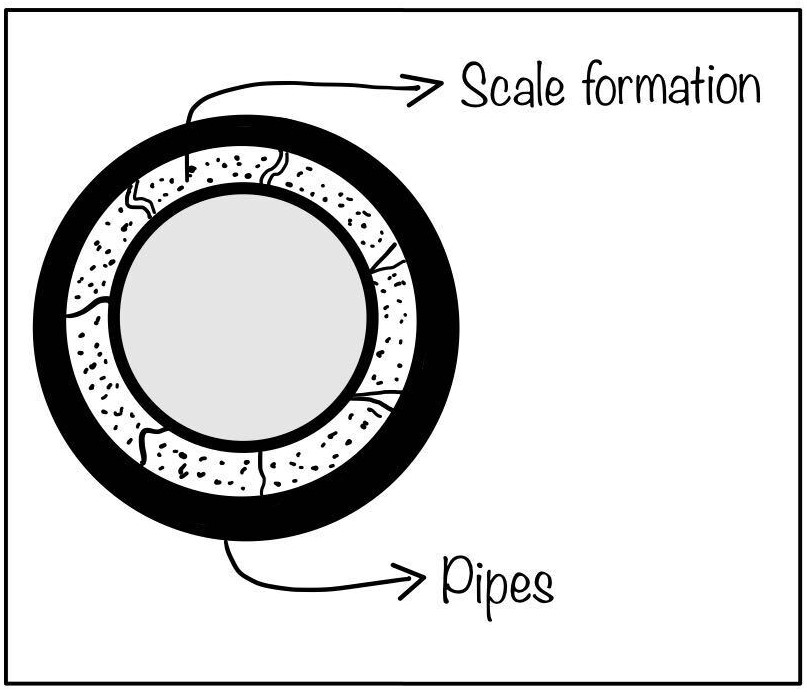If you use a water heater, you may have noticed scaling buildup over time. The same issue can occur in pipes as well. The cause of these problems is hard water, which can also lead to faded clothes, lathering difficulties, and potential health effects. Therefore, it is crucial to address the issue of water hardness. To reduce or remove water hardness, a process called softening is necessary. In this post, we will delve into the details of water softening and its benefits.

Method for water softening
Water softening is the process of eliminating Ca, Mg, and other metal cations present in hard water. Consequently, using soft water requires less soap for the same cleaning effort because soap does not bond with calcium and magnesium ions, which would otherwise form scum. Additionally, helps in increasing the lifespan of plumbing by reducing scale build up in pipes and fittings. Several techniques are available for the water softening process. These may include chemical, physical, or biological methods, each with its unique advantages and drawbacks.
Boiling
We can remove the temporary hardness of the water in this process. This is because bicarbonates of calcium and magnesium decompose to form insoluble calcium and magnesium carbonate.
Lime-soda treatment
Water softening is a common method which helps to reduce the hardness of water. This process can be carried out under hot or cold conditions. Both lime and sodium carbonate are effective in removing permanent hardness from water. To achieve water softening, one can use quick lime (CaO) or hydrated lime. Lime and soda ash react to precipitate dissolved calcium and magnesium salts, ultimately reducing water hardness. Therefore, the water softening process widely accepts this technique as a standard practice.
- Advantages: This is an economical process. pH value increases in this process so corrosion of the distribution pipe decreases. This process can treat excessively hard water, turbid water, and acidic water easily as compared to other methods. It also removes iron and magnesium to some extent.
- Disadvantages:This process forms a large quantity of sludge. Treating the sludge requires performing sludge digestion. To treat the sludge, this process requires recarbonation.
Zeolite treatment
Zeolite comprises of aluminum, silica, and soda, forming a complex compound. When hard water passes through a bed of ion exchange material or ion exchanger, which consists of zeolite, the ion exchange process replaces calcium and magnesium ions with sodium ions. This process results in achieving almost zero hardness.
- Advantages: Furthermore, using zeolite for water softening offers several advantages. Firstly, this process avoids generating sludge, eliminating the need for sludge disposal. Secondly, it doesn’t require skilled supervision during the ion exchange process. Additionally, it enables reducing water hardness to zero, which can be particularly useful for softening water to use in boilers and certain textile industries.
- Disadvantages: Cannot be adopted for highly turbid water.
Demineralization process
To enhance water quality, demineralization is an alternative method used in the softening process. Moreover, this technique is quite similar to the zeolite process. However, there is a key distinction in that metallic ions, including calcium and magnesium, are replaced with hydrogen ions. This ion exchange is accomplished through the use of carbonaceous material or resin. Ultimately, this process results in the production of mineral free water.
Reverse osmosis
Reverse osmosis is a highly effective water purification process that eliminates ions, unwanted molecules, and larger particles from drinking water. To accomplish this, a partially permeable membrane is utilized, which selectively removes contaminants from the water. By applying pressure to the water molecules through this semipermeable membrane, the contaminants are separated and flushed away. As a result, this method produces clean and delicious drinking water that is safe for consumption.
Advantages of soft water
Natural water sources, such as rain water, glaciers, icebergs, ponds, lakes, rivers, and streams, have distinct characteristics in terms of their sodium and calcium levels. However, these sources of water are not always safe for consumption due to contamination or pollution, necessitating water treatment. Soft water, which lacks essential minerals, tends to absorb them, resulting in hardness. Unfortunately, hard water can lead to various drawbacks. As a result, it is critical to undergo a softening process to eliminate hardness and its associated problems.
The advantages of soft water are:
- Life of plumbing: Does not damage the pump as much as hard water, thus extending the life of your plumbing.
- Better washing: No residue leaving so it can not leave minerals behinds
- Reduce Corrosion: Low corrosive properties than hard water.
When the hardness of water reduces to a very low value it can create potential health risks.
Conclusions
Water softening can be accomplished through two main methods: the addition of chemicals or ion exchange. However, the use of chemicals to treat water can result in a significant amount of sludge generation, making proper treatment of the sludge an essential consideration. In order to determine the most economical softening process, it is crucial to take into account the types of hardness present in the water. Specifically, the percentages of carbonates and non carbonates hardness serve as key factors in selecting the optimal softening process.
There are two types of hardness that are found in water:
- Temporary hardness: It can be easily removed by a simple boiling process.
- Permanent hardness : This type requires a more complex treatment process. There are several methods that can be used to remove permanent hardness such as the lime soda process, zeolite process, desalinization process, and reverse osmosis process.
This article was crafted by a group of experts at eigenplus to ensure it adheres to our strict quality standards. The individuals who contributed to this article are:
Author

Suprabha Panda
M.Tech
She is an assistant professor with masters in Environmental Engineering.

